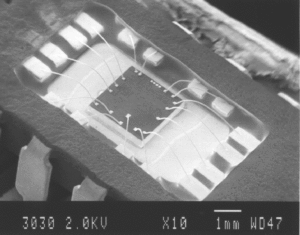 Recover PIC18F2620 Microprocessor Eeprom Program
Recover PIC18F2620 Microprocessor Eeprom Program
The Idle modes allow the controller’s CPU to be Recover PIC18F2620 Microprocessor Eeprom Program while the peripherals continue to operate. Selecting a particular Idle mode allows users to further manage power consumption.
If the IDLEN bit is set to a ‘1’ when a SLEEP instruction is executed, the peripherals will be clocked from the clock source selected using the SCS1:SCS0 bits; however, the CPU will not be clocked. The clock source status bits are not affected when Break IC ATmega640A Secured Flash. Setting IDLEN and executing a SLEEP instruction provides a quick method of switching from a given Run mode to its corresponding Idle mode.
If the WDT is selected, the INTRC source will continue to operate. If the Timer1 oscillator is enabled, it will also continue to run. Since the CPU is not executing instructions, the only exits from any of the Idle modes are by interrupt, WDT time-out or a Reset to prevent the process of Decrypt Secured MCU ATMEGA128P Code.
When a wake event occurs, CPU execution is delayed by an interval of TCSD (parameter 38, Table 26-10) while it becomes ready to execute code when Crack MCU Flash. When the CPU begins executing code from Recover PIC18F2620 Microprocessor Eeprom Program, it resumes with the same clock source for the current Idle mode.
For example, when waking from RC_IDLE mode, the internal oscillator block will clock the CPU and peripherals (in other words, RC_RUN mode). The IDLEN and SCS bits are not affected by the wake-up for the purpose of Reverse Engineering IC ATMEGA88PV Locked Flash. While in any Idle mode or the Sleep mode, a WDT time-out will result in a WDT wake-up to the Run mode currently specified by the SCS1:SCS0 bits.
